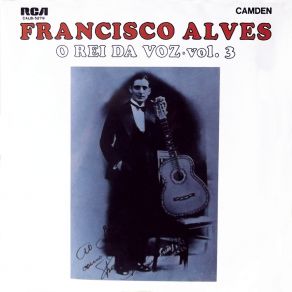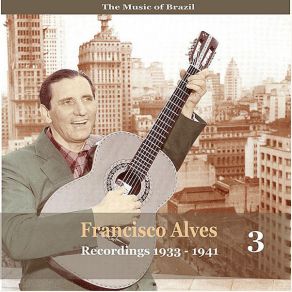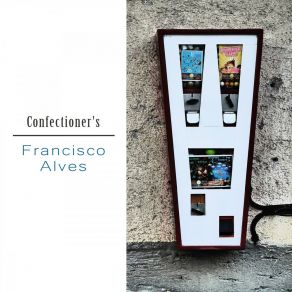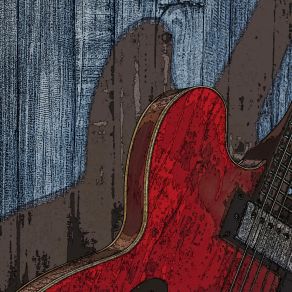Francisco Alves
Wikimp3 information about the music of Francisco Alves. On our website we have 24 albums and 45 collections of artist Francisco Alves. You can find useful information and download songs of this artist. We also know that Francisco Alves represents Latin genres.
Biography
[Edit]Francisco Alves was maybe the most successful singer of all time in Brazil. In his career span of 35 years of success (interrupted by his death in a car accident), he was the singer who recorded more 78 rpm albums in Brazil than anyone: 526 albums with 983 songs. As a composer, he left around 132 songs, but many of them were later proved to have been bought from composers. Even then, just one of his certified creations (his signature tune, "A Voz do Violão," with lyrics by Horácio Campos) is enough to accredit him in this field. The son of a Portuguese immigrant who played the bombardon in leisure hours, Chico Alves (as he became known later by his audiences) was praised for his voice since he was a child, but worked at several small jobs (shoeshiner, hatmaker, taxi driver) prior to success. His artistic career debut was in 1918, in the company owned by actors João de Deus and João Martins. He recorded for the first time the next year, invited by João Gonzaga (alleged son of the female conductor Chiquinha Gonzaga and owner of the newly founded recording company Popular). The two albums had the marcha "O Pé de Anjo" and the sambas "Fala Meu Louro" and "Alivia Estes Olhos," all by Sinhô (who participated in the recording as an accompanying musician). "O Pé de Anjo" was part of the musical polemic that appeared after the first samba, "Pelo Telefone," opposing the Bahianos and Cariocas. This song was the biggest hit of the Carnival of 1920, and the other songs also were successes in that year. Alves would record three other albums with eight songs for Popular, but the recording company would last less than a year, having sold very little records. Invited by José Segreto, he became a regular performer at the Teatro São José together with Vicente Celestino, whom he imitated until then, and Otília Amorim. Enjoying crescent popularity, he moved successively from one theater company to another. In 1927, he was taken to Odeon by Freire Júnior, recording 11 albums with 19 songs still in the mechanical process. In July of that year, Odeon became the first company in Brazil to record through the electromagnetic process, and Alves was the first artist to do so in the album with the marcha "Albertina" and the samba "Passarinho do Má" (both by Duque). Soon, he also became a Parlophon artist (Odeon's subsidiary label), recording under the pseudonym of Chico Viola. In 1928, he made acquaintance with the Estácio sambistas Ismael Silva (from whom he bought the samba "Me Faz Carinhos") and Bide (from whom he bought "A Malandragem"). He then became friends with the entire Estácio gang, parading in the local samba school (which was, in fact, just a rancho) Deixa Falar during Carnival. Becoming true friends with Ismael Silva, he recorded almost all his compositions (mostly written with Nilton Bastos) until 1935. In 1929, he debuted in radio at the Rádio Sociedade. He was already an extremely popular artist by then. In 1930, he performed in Buenos Aires, Argentina. In the same year, he formed a duo with Mário Reis, recording with him 12 important albums. In 1931, he performed again in Buenos Aires, Argentina, with Mário Reis, Carmen Miranda (her first international tour), Luperce Miranda, and Tute. Two years later, he signed with Rádio Mayrink Veiga together with Carmen Miranda and Mário Reis. In the same year, his records were used in the film Voz do Carnaval (Ademar Gonzaga). In 1934, he left Odeon for RCA Victor, where he would stay until 1937. In 1934, he also toured the South with Noel Rosa, Mário Reis, and Nonô as accompanying pianist. He had a show of his own on Rádio Cajuti, who launched Orlando Silva (who would be his rival in popularity). In 1935, he debuted in cinema in the film Alô, Alô, Brasil (Wallace Downey/João de Barro/Alberto Ribeiro), followed by Alô, Alô, Carnaval (Ademar Gonzaga, 1936); Laranja da China (J. Rui, 1940); and, by Luís de Barros, Samba em Berlim (1943), Berlim na Batucada (1944), Pif-Paf (1945), Caídos do Céu (1946), and Esta é Fina (1948). In 1936, he performed for two months at Radio El Mundo (Buenos Aires, Argentina), having invited Alzirinha Camargo and Benedito Lacerda. In 1937, he returned to Odeon, staying there until 1939. In 1939, he was was the launcher of the genre samba-exaltação, recording "Aquarela do Brasil" (Ary Barroso). In that year, he became a Columbia artist, recording 14 albums there until July 1941, when he returned to Odeon where he would stay until his demise, also recording four songs for RCA Victor days before the accident. In 1941, he signed with Rádio Nacional, where would stay until his death. After he was gone, his life was depicted in the film Chico Viola Não Morreu (1955). His autobiography was released in 1966, written by David Nasser (his partner since 1940, with whom wrote 20 songs) and titled Chico Viola.
Title: The Music of Brazil / Francisco Alves, Volume 3 / 1933 - 1941
Artist: Francisco Alves
Genre: World Music, Latin
Title: The Music of Brazil / Francisco Alves, Volume 2 / 1933 - 1941
Artist: Francisco Alves
Genre: World Music, Latin
Title: Versão X Original - Single / Versao X Original - Single
Artist: The Merry Macs, Francisco Alves
Genre: Classical
Title: The Music of Brazil / Francisco Alves, Volume 1 / 1933 - 1941
Artist: Francisco Alves
Genre: World Music, Latin
Collections
Title: Ary Barroso em Aquarelas, Vol. 4
Genre: Latin
Title: Os Grandes Cantores do Radio
Title: Le chant du Nordeste, Vol. 1
Genre: World Music
Title: Bresil, Vol. 1
Genre: World Music
Title: Marchinhas de Carnaval Vol 7
Genre: Latin
Title: Saudade em Samba
Genre: World Music, Latin
Title: I Love Brazilian Samba
Title: Marchinhas de Carnaval Vol 1
Genre: Latin
Title: Latin Forever
Genre: Latin
Title: Choro e Samba Frevo do Brasil, Vol. 1
Genre: Latin
Title: Bossa Nova Cup 2014
Title: World Carnival Brazil, Vol. 2
Genre: Latin
Title: Samba 1917-1947 (CD2)
Genre: Samba, World Music
Title: M. P. B. Milenium - Vol. 2
Genre: Latin
Featuring albums
Title: Nova História Da MPB Lamartine Babo / Nova Historia Da MPB Lamartine Babo
Artist: Lamartine Babo
Genre: Pop
Title: Clássicos de Outrora, Vol: 1 / Classicos de Outrora, Vol: 1
Artist: Various Artists
Genre: Latin
Title: A Música de Príncipe Pretinho / A Musica de Principe Pretinho
Artist: Various Artists
Genre: Latin
Title: Armando Marçal & Bide (1933 - 1939) / Armando Marcal & Bide (1933 - 1939)
Artist: Various Artists
Genre: Latin

































































































